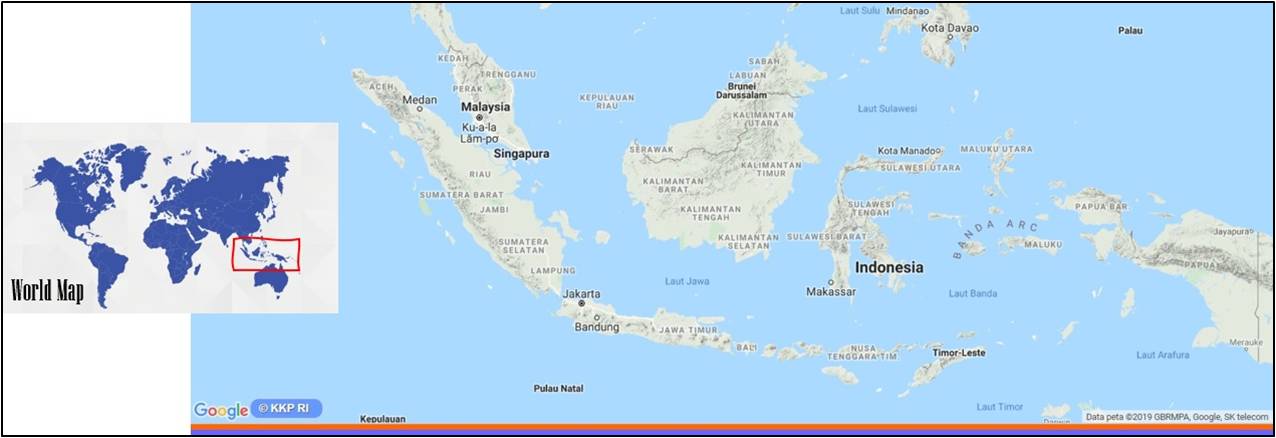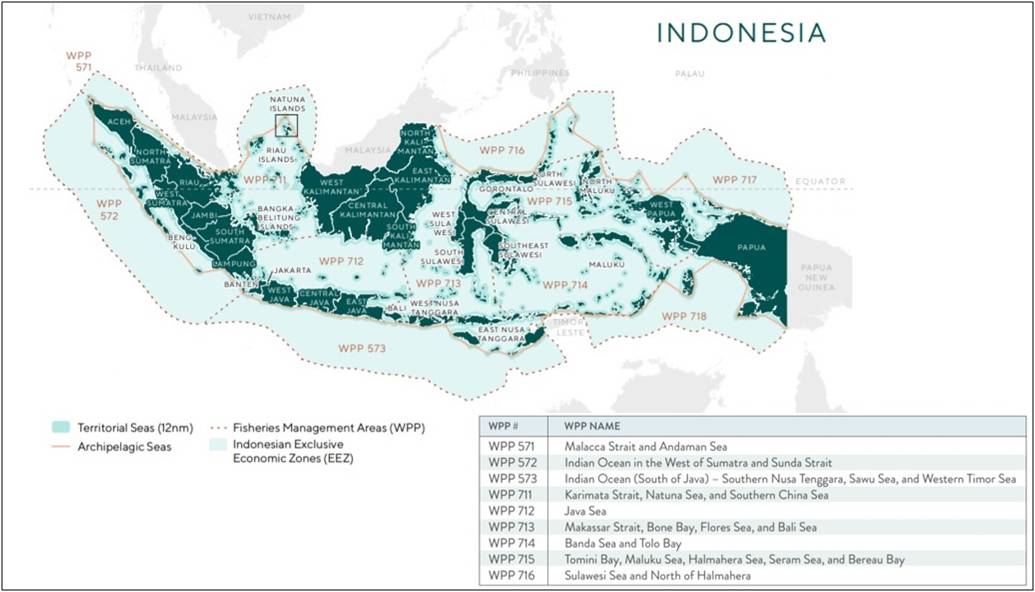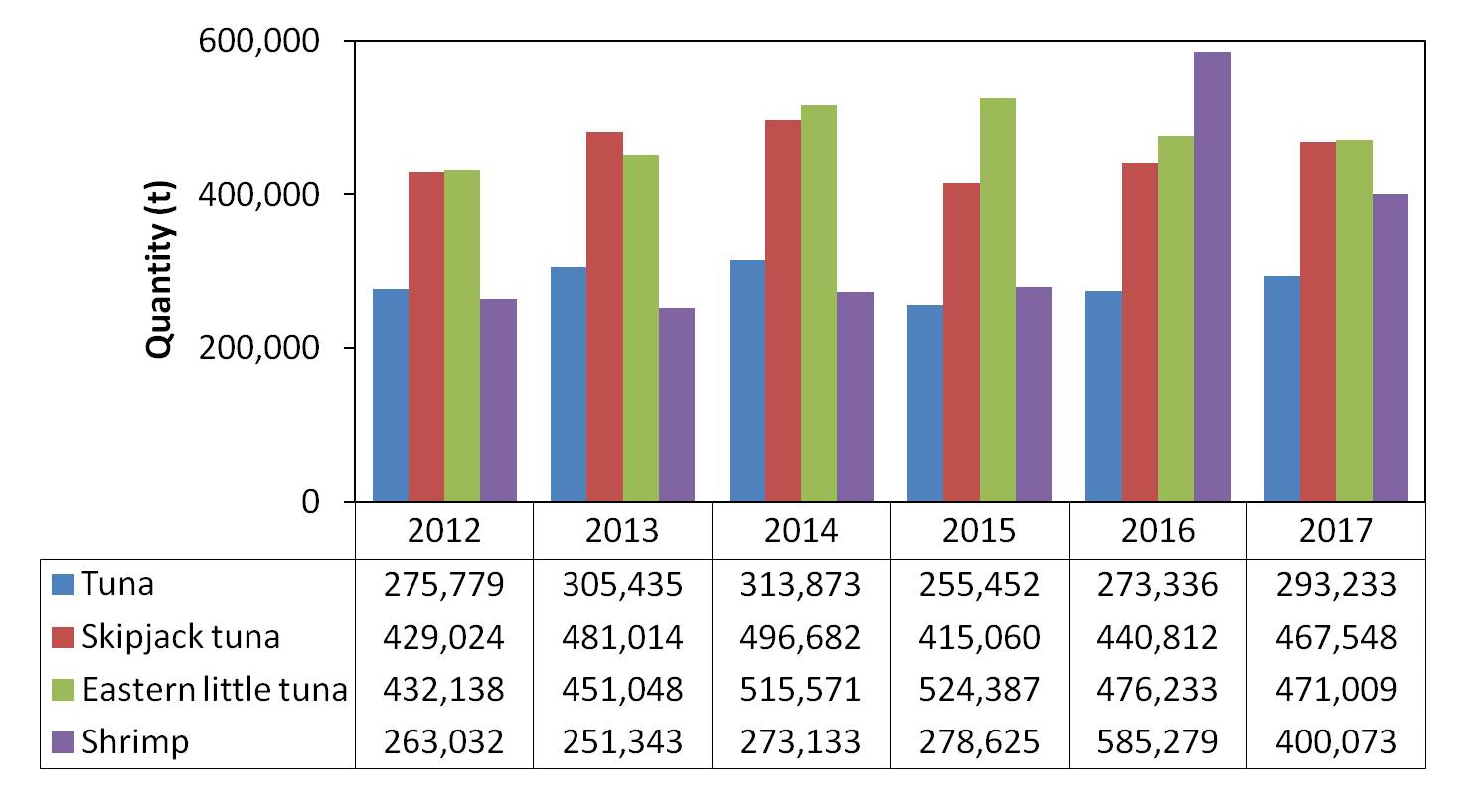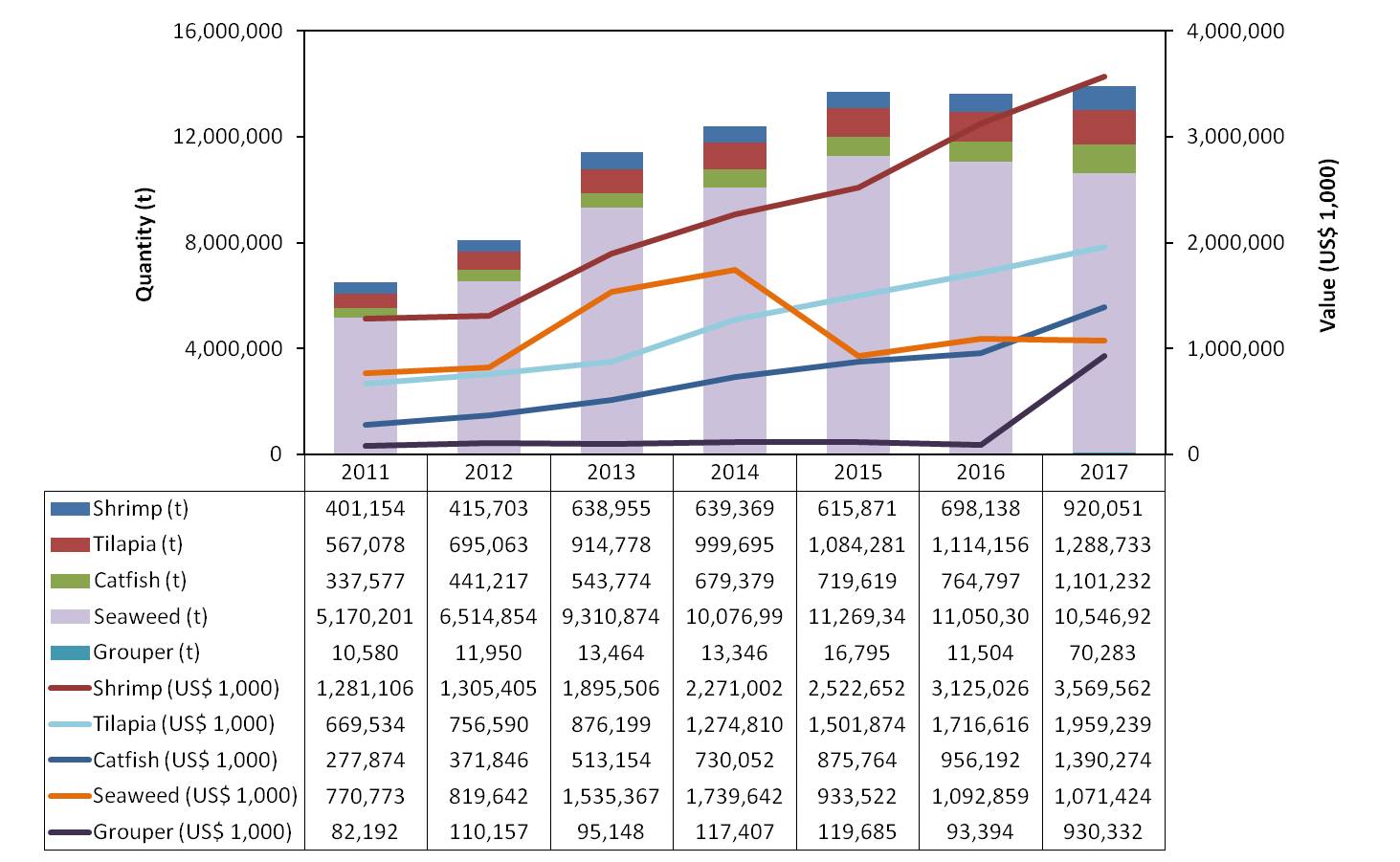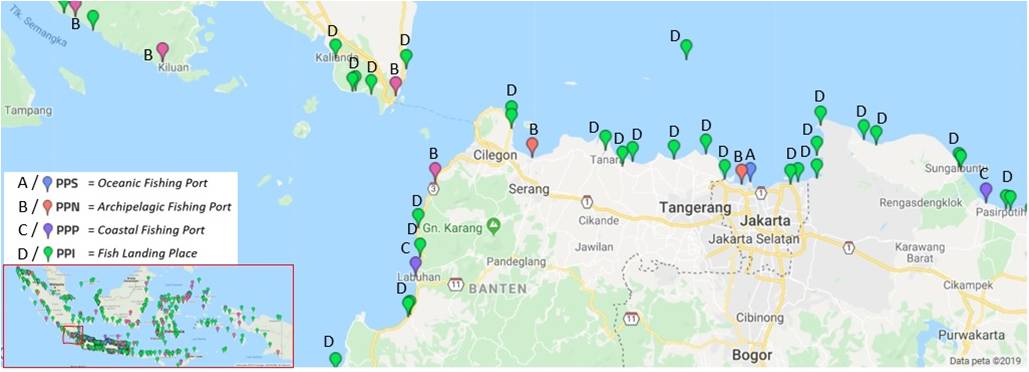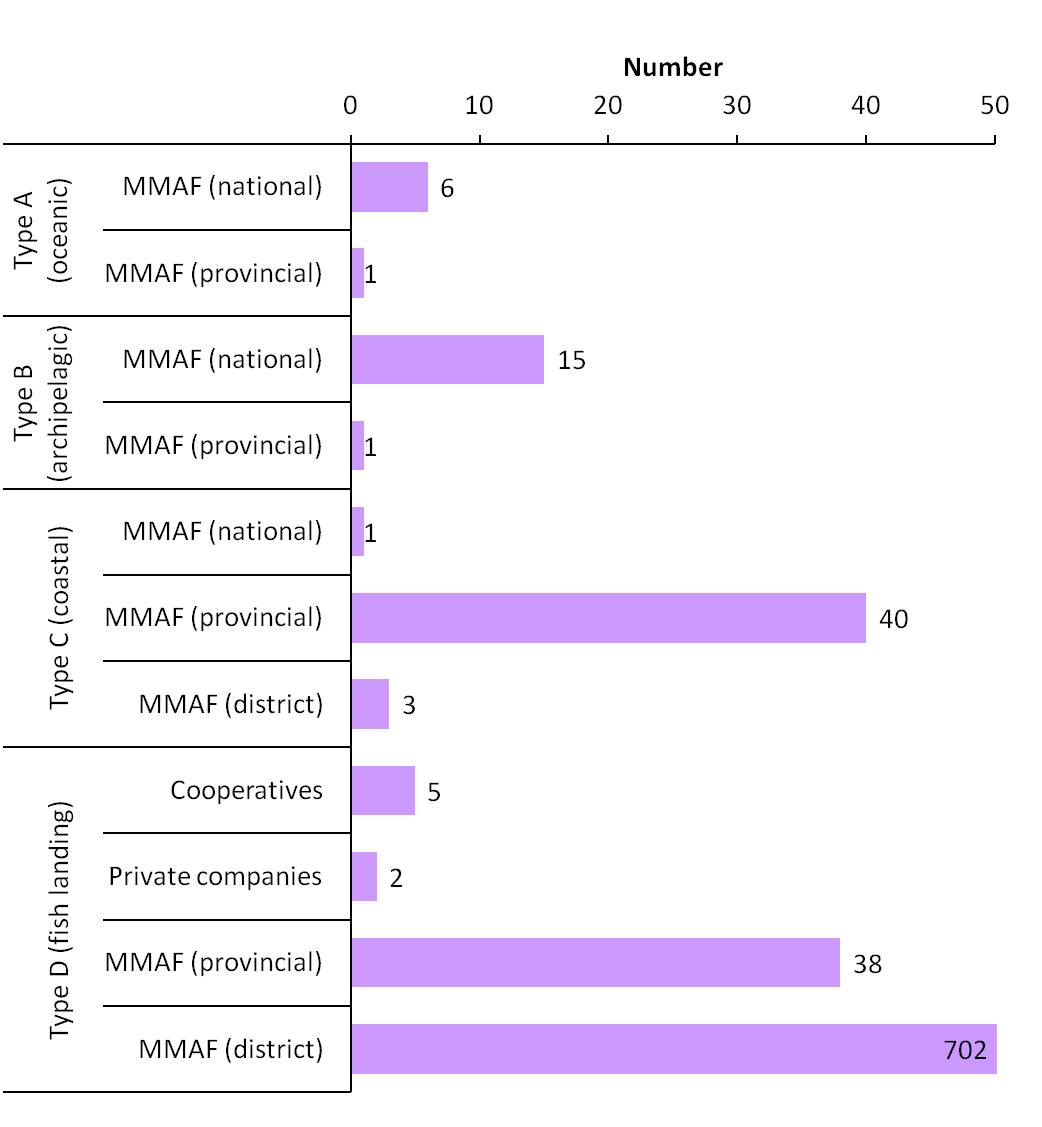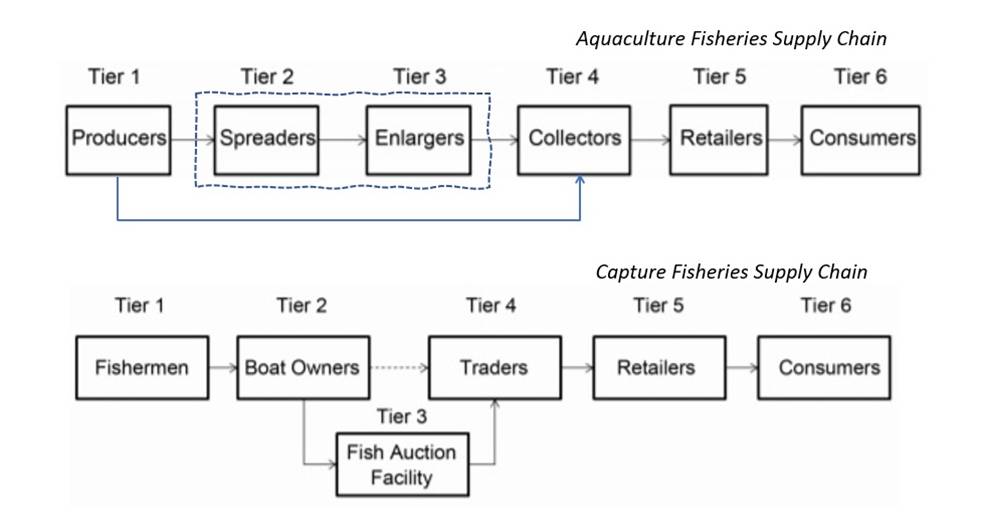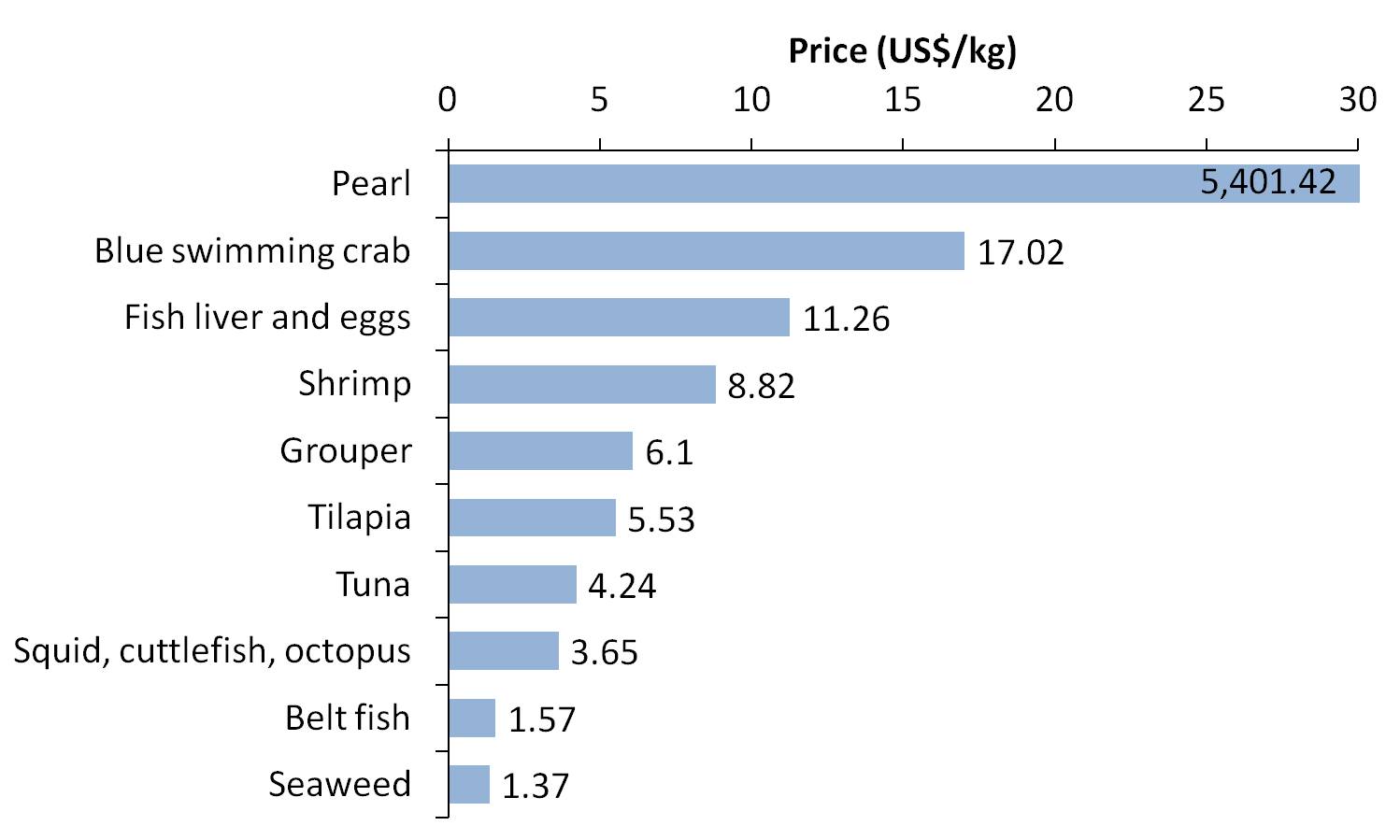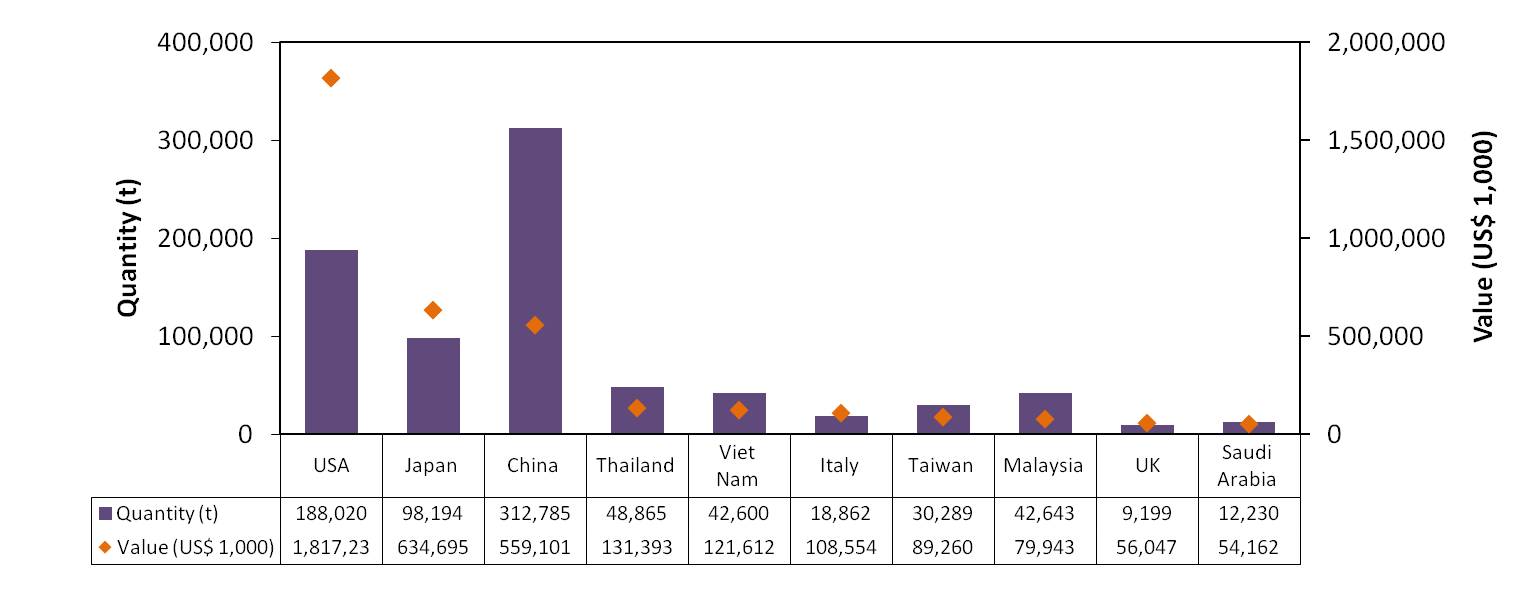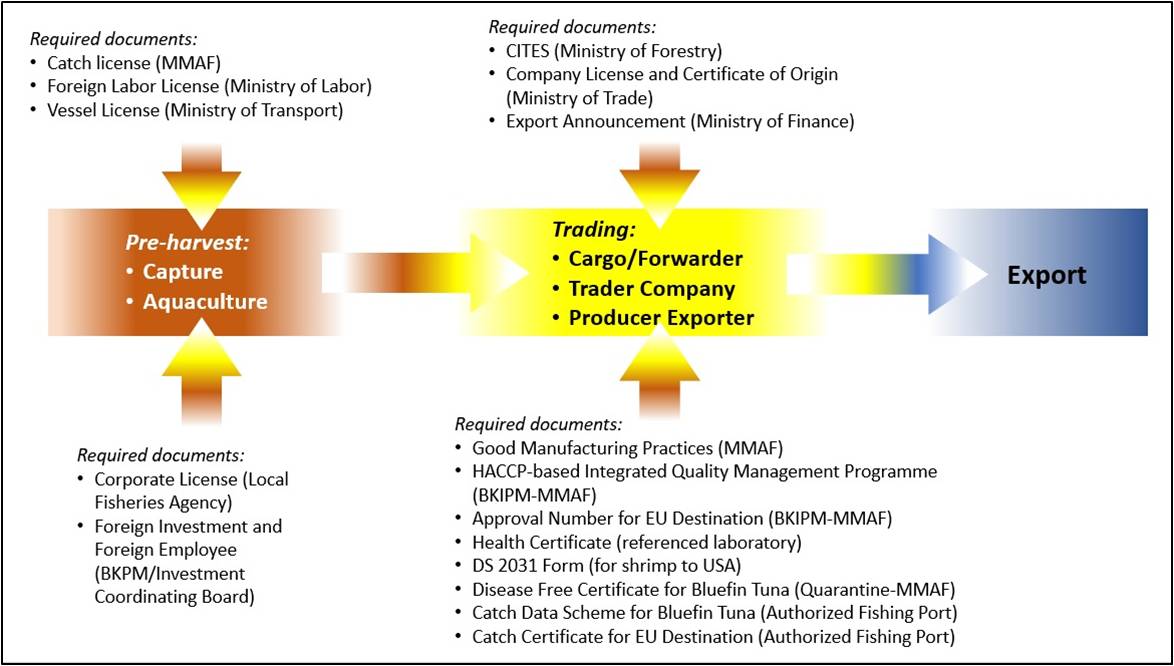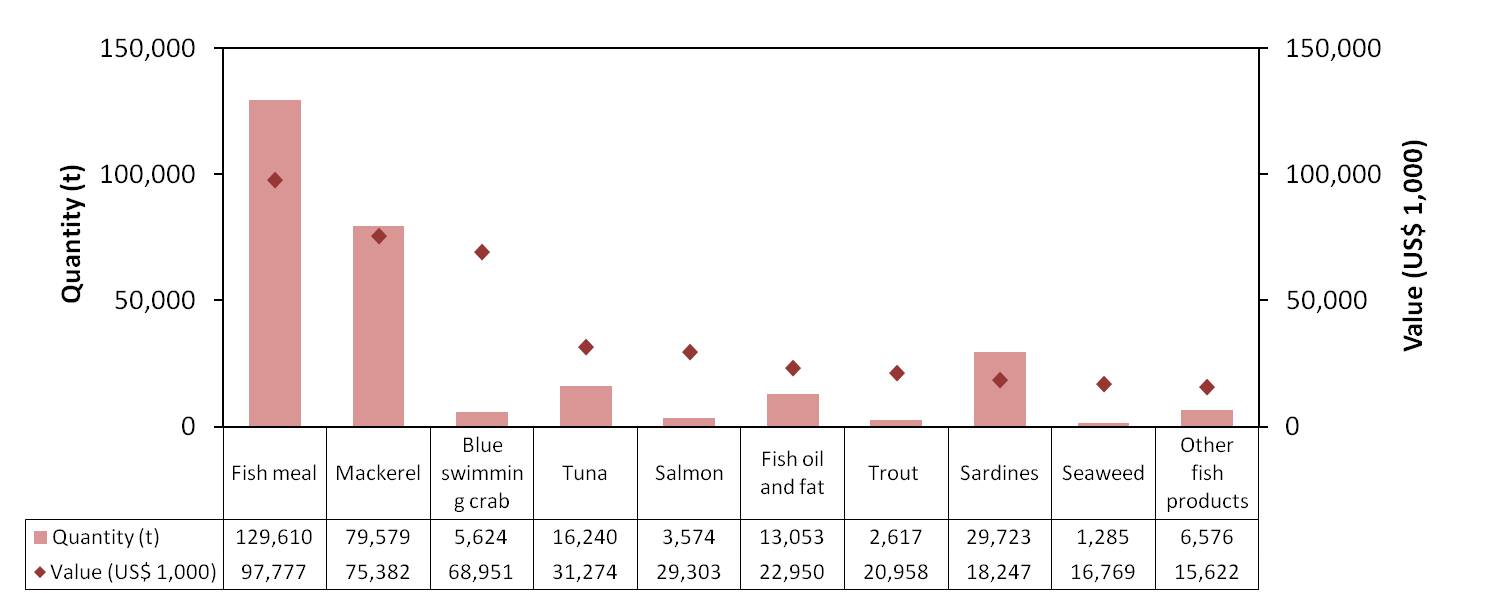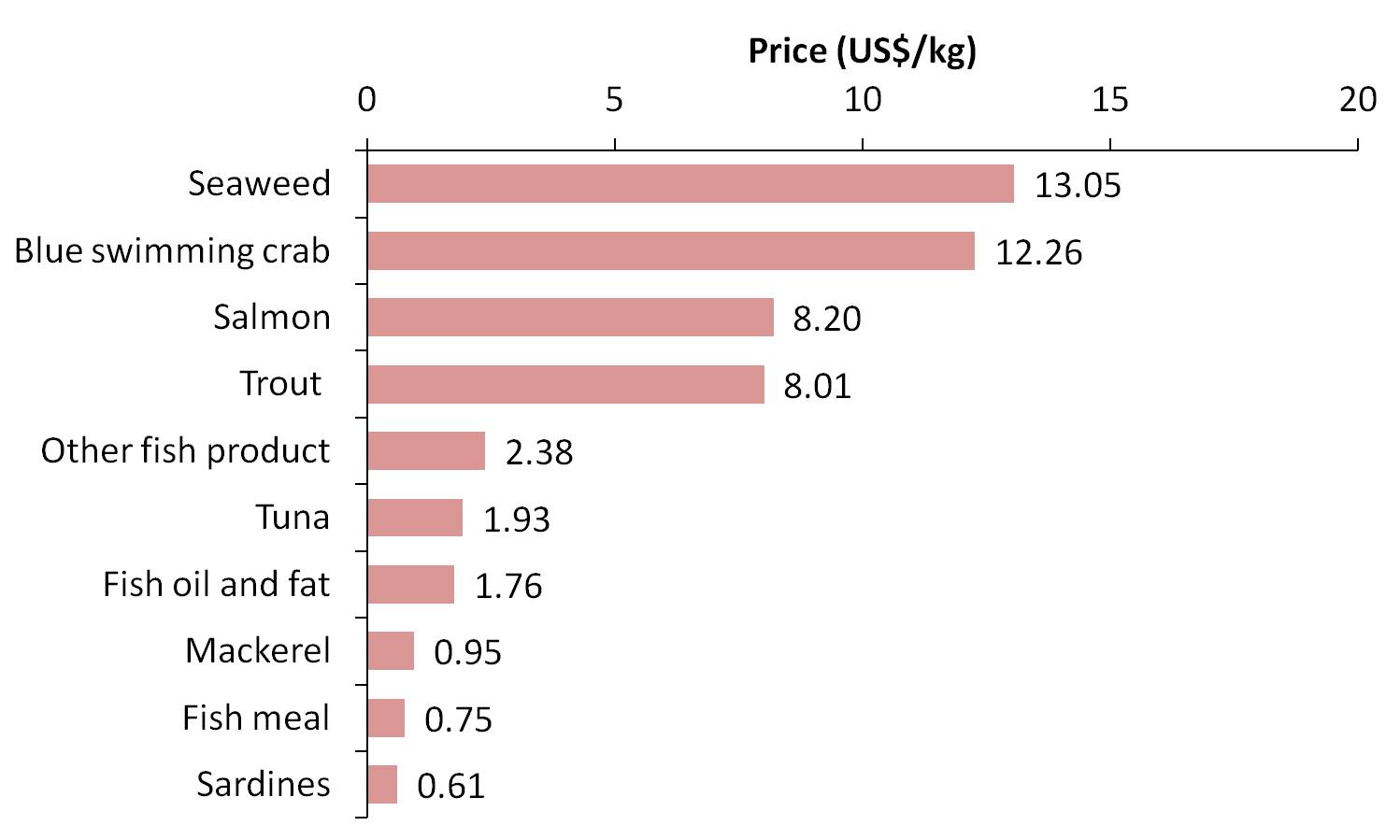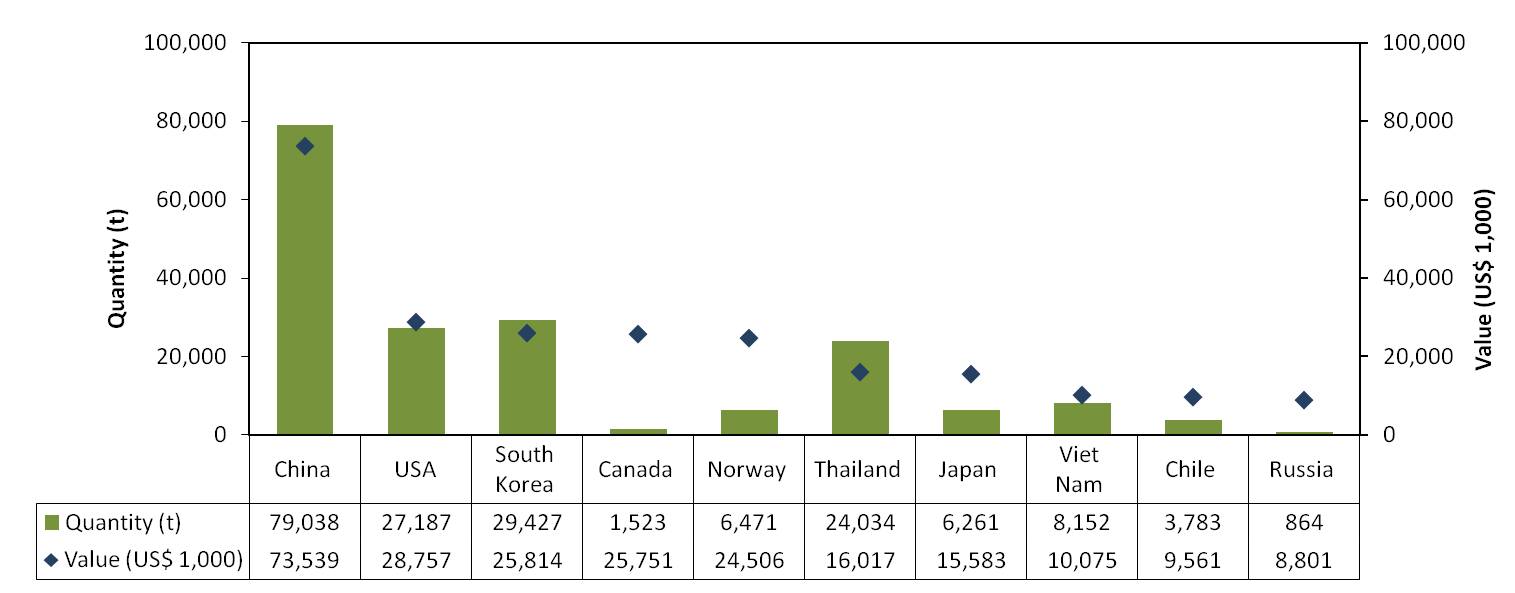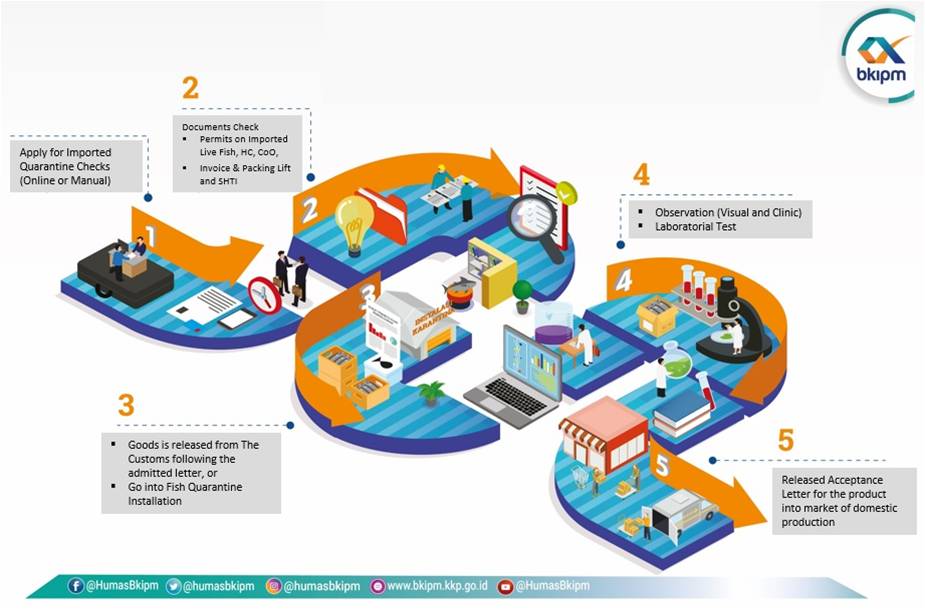By Mr. Agus Sapari, 2019 Regional Fisheries Policy Network (RFPN) Member for Indonesia
INTRODUCTION
Off the coast of mainland Southeast Asia, Indonesia is located in between the Indian Ocean and Pacific Ocean (Figure 1). The country’s land area is 1.91 million km2 and length of coastline is 108,000 km with 17,504 islands. The islands are grouped into the Greater Sunda-Islands of Sumatra, Java, the southern extent of Borneo, Celebes, the Lesser Sunda Islands of Bali, a chain of islands that runs eastward through Timor, the Moluccas, and the western extent of New Guinea (generally known as Papua). The capital city, Jakarta, is located near the northwestern coast of Java. The climate of Indonesia is determined partly by its island structure and its position astride the equator, which assure high, even temperatures. Recently, Indonesia is the world’s fourth most populous nation with nearly 264 million people. The country has an outstanding economic growth by overcoming the Asian financial crisis in the late 1990s and ranked as 10th largest economy in terms of purchasing power in the world, and a member of the G-20. The GDP per capita has significantly increased from US$ 823 in the year 2000 to US$ 3,932 in 2018 (WorldBank, 2019).
FISHERIES SECTOR
The fisheries sector of Indonesia is composed of capture fisheries and aquaculture. Capture fisheries includes marine and inland waters, while aquaculture includes marine, seaweed, floating net, brackishwater pond, freshwater pond, cage, floating cage net, pen, and rice fish. The gross domestic product (GDP) at current prices for the fisheries sector in 2010-2018 indicated a steady increase with growth trend as much as 13.19 % per year and the GDP in 2018 was estimated at US$ 27,293 million (BI, 2019). The fish consumption of the country was 50.68 kg/capita in 2018 (KKP, 2019b).
The country has started its commitment in the management of its marine and fishery resources in 1999 by establishing the Department of Marine Exploration and Fisheries and later on changed its name to Ministry of Marine Affairs and Fisheries (MMAF) in 2009, which is responsible for the development of marine exploitation, protection, and conservation. The national waters of Indonesia are divided into 11 Wilayah Pengelolaan Perikanan (WPP) or Fisheries Management Areas, as per the MMAF Decree No. PER. 01/MEN/2009 (Figure2). The areas are divided for fisheries management purposes based on characteristics of fishery resources and natural environment (CEA, 2019).
FISHERIES PRODUCTION
In 2017, the fisheries production of Indonesia was approximately 23.19 million t (US$ 27.27 billion) including 7.07 million t (US$ 14.04 billion) from capture fisheries and 16.11 million t (US$ 13.24 billion) from aquaculture (Figure 3). From 2011-2017, the production volume from capture fisheries increases every year except for a slight decrease during 2016, while aquaculture also constantly increases (KKP, 2019c). Tunas and shrimp were the major species of capture fisheries (Figure 4). For aquaculture, the major species include shrimp, tilapia, catfish, seaweed, and grouper (Figure 5).
FISHING PORTS
There are a total of 814 fishing ports throughout the country (Figures 6). The four types of fishing ports include Type A (oceanic), Type B (archipelagic), Type C (coastal), Type D (fish landing), which are being managed mostly by MMAF and some by cooperatives and private companies (Figures 7) (PIPP, 2019). Type A serves as international market and connects directly with other countries in sending out or in the fish and fishery products. One example is in Bitung, which is also known as Skipjack City because of the numerous landings of skipjack tuna. Bitung fishing port has a land area of 4.6 ha and equipped with wide ship dock, port office building and services, fish auction and market, standardized road for container, and coastal shops. For Types B, C, and D, they serve as domestic fish markets. Type D is the most abundant and distributed in almost every District in Indonesia.
FISHERIES SUPPLY CHAIN
Figure 8 shows the supply chain in freshwater aquaculture and capture fisheries. For the freshwater aquaculture supply chain, the producers at Tier 1 determine the successful of production of good fish eggs or larvae of fish. The spreaders at Tier 2 cultivate the spawned fish larvae and enlargers at Tier 3 culture the fish until it reach the desired size for human consumption. The collectors or wholesalers at Tier 4 buy the fish with ready-to-consume size and sell it to retailers in fishing ponds, modern markets, restaurants, and traditional markets at Tier 5. In some areas, however, Tier 2 and Tier 3 are not present in the supply chain because of strict requirements from companies on the standards of aquaculture products (Guritno & Tanuputri, 2017). With regard to the capture fisheries supply chain, Tier 1 and Tier 2 usually have direct connection with Traders at Tier 4. However, in an area where there is a fish auction facility, the government conducts fish auction at Tier 3. At Tier 4, the traders take control of the marketplace for fish and fishery products.
EXPORT OF FISH AND FISHERY PRODUCTS
The exported fish and fishery products in 2018 had a total volume of 1.13 million t with the value of US$ 4.86 billion. In terms of value, the top 10 exported fish and fishery products include shrimp, tunas, squids, crab, seaweed, tilapia, pearl, grouper, fish liver, and belt fish (Figure 9). The price per kilogram of exported fish and fishery products is shown in Figure 10 and the top 10 countries of destination based on value of major fish and fishery products exported by Indonesia in 2018 are shown in Figure 11.
The management of exporting fish and fishery products from Indonesia is facilitated by the national government agencies (Figure 12). During the pre-harvest, the MMAF issues the Catch License the Ministry of Transport issues the Vessel License, and the Ministry of Labor issues the Foreign Labor License to the exporters. Before exporting the fish and fishery products, the exporters (e.g., cargo/forwarder, trader company, producer exporter) should secure the required documents from the Ministry of Environment and Forestry for the CITES clearance, Ministry of Trade for the Company License and Certificate of Origin, and Ministry of Finance for the Export Announcement.
IMPORT OF FISH AND FISHERY PRODUCTS
In 2018, Indonesia imported a total of 30.41 million t with a total value of US$ 4.6 billion. In terms of value, the top 10 imported fish and fishery products include fish meal, mackerel, blue swimming crab, tuna, salmon, fish oil and fat, trout, sardines, seaweed, and others (Figure 13). The price per kilogram of imported fish and fishery products is shown in Figure 14 and the top 10 countries of origin (ranking was based on value) of major fish and fishery products imported by Indonesia in 2018 are shown in Figure 15.
The management of importing fish and fishery products in Indonesia is under the Badan Karantina Ikan, Pengendalian Mutu dan Keamanan Hasil Perikanan (BKIPM) or Fish Quarantine Agency, Fishery Product Quality and Safety Control, an agency under MMAF which is responsible for issuing the documents required for marketing of imported fish and fishery products following the five major steps (Figure 16) to clear of the imported products before entering the Indonesian domestic market.
ISSUES ON FISHERIES TRADE
- IUU fishing by foreign vessels in the EEZ of Indonesia – the country lost around US$ 3-20 billion/year because of IUU fishing and other associated activities such as money laundering, human trafficking, tax fraud as well as smuggling of illegal drugs, weapons, and endangered species
- Human trafficking – a prevailing issue associated with IUU fishing which was aggravated because of weak rule of law, inadequate data on violators, limited coordination among international actors, and increasing global demand for seafood products at an affordable price
- Foreign partnerships – the country is actively seeking foreign partners to invest in fisheries infrastructure (e.g., ports, cold storage) and reduce import tariff values in order to make Indonesian fish and fishery products more competitive
LAWS AND REGULATIONS ON FISHERIES TRADE
The laws and regulations on fish trade in Indonesia (Table 1) were issued with the purpose of maintaining a sufficient fish stock for domestic consumption, sustaining the supply of raw materials for fish processing industries, ensuring the quality food fit for human consumption, and protecting the natural resource and environment from extinction and spread of disease. Moreover, laws and regulations were also issued for the trade of restricted commodities (Table 2) as well as for imported fish and fishery products to Indonesia (Table 3).
Table 1. Laws and regulations on fish trade in Indonesia
|
Operational aspects |
Laws/regulations |
Responsible ministries/agencies |
| Product supply and logistic |
|
|
| Resources management and protection |
|
|
| Product standardization |
|
|
| Quality control, inspection, and assurance
|
|
|
| Import-export policy, restriction, and limitation |
|
|
| Tariff policy |
|
|
| Market access and promotion |
|
|
| Licensing and registration for trader and industrial company |
|
|
Table 2. Laws and regulations for the trade of restricted commodities in Indonesia
|
Laws/regulations |
Summary |
| Presidential Regulation 71/ 2015 | The national and local governments control the availability of staple food and in sufficient quantity, good quality, and affordable price. This regulation implies the state could refuse issuing the license to export or import milkfish, short mackerel, tuna, long-tail tuna, skipjack tuna to ensure the availability for domestic consumption. |
| Presidential Decree 43/1978 | As a member state of CITES, all flora and fauna listed in CITES Appendix 2 are prohibited to export and import, unless stated different in their NDF |
| Minister of Environment and Forestry Decree P20/MENLHK/SETJEN/KUM.2/6/2018 | Restricted trade for 20 species of fish and five species of aquatic mollusks |
| Minister of Marine Affairs and Fisheries Regulation No. 56/PERMEN-KP/2016 | Restriction to catch and trade the gravid female of lobster and crab and less than 200 g or undersized species |
Table 3. Laws and regulations for imported fish and fishery products to Indonesia
|
Operational Aspects |
Legal basis |
| Tariff and tax |
|
| Commodities restriction |
|
| Documents and assurance requirements for export-import activities |
|
| Quality assurance |
|
| Export-import policy |
|
| Licensing and registration |
|
INTERNATIONAL TRADE AGREEMENTS
Indonesia has ratified the General Agreement on Trade and Tariff (GATT) on 24 February 1950. as well as the Law No. 7 1994 on 1 January 1995 to be the member of World Trade Organization (WTO). Under WTO, the instruments relevant to fishery trade are Sanitary and Phyto-sanitary Measures (SPS), Technical Barrier to Trade (TBT), Subsidies and Countervailing Measures, Import Licensing Procedures, Anti-Dumping, Rules of Origin, Dispute Settlement and Tariff Reduction. The country has ratified the Presidential Decree Number 20/1998 to conform the SPS to protect the consumers from food borne diseases or contaminants and protect the domestic plants and animals from diseases. Indonesia also adopted the International Plan of Action (IPOA) for combating IUU fishing and enforced in 2012. Moreover, the country complies with the Marine Stewardship Council (MSC) of the European Union (EU) as well as the Generalized Standard of Preference (GSP) and prepared for Seafood Import Monitoring program (SIMP) of the USA. Table 4 shows the other bilateral/multilateral agreements on fisheries trade signed by Indonesia.
Table 4. Bilateral/multilateral agreements on fisheries trade signed by Indonesia
|
Parties |
Agreements |
Date |
| ASEAN | Free Trade Area | 28 January 1992 |
| ASEAN-People’s Republic of China | Comprehensive Economic Cooperation Agreement | 4 Novermber 2002 |
| ASEAN- Japan | Comprehensive Economic Partnership | 2008 |
| ASEAN-India | Comprehensive Economic Cooperation Agreement | 13 August 2009 |
| ASEAN-Australia and New Zealand | Free Trade Agreement | 01 January 2010 |
| Indonesia-Regional Comprehensive Economic Partnership | Trade Agreement (include fisheries sector) in ASEAN area with six economic country partners in ASEAN and three East Asia countries (Japan, South Korea and China). | February 2019 |
| Indonesia-European Free Trade Association | Free Trade Arrangements on certain fish and fishery products. | 2019 |
| Indonesia- Japan | Economic Partnership Agreement. | 20 August 2007 |
| Indonesia- Pakistan | Preferential Trade Agreement. | 2012 |
| Indonesia-Aljazeera | Memorandum of Understanding on post-harvest technology, fish and fishery product marketing and export agreement in fishery sector. | 2012 |
| Indonesia- Saudi Arabia | Memorandum of Understanding on Trade Policy for Export – Import Arrangement. | 2018 |
| Indonesia- Japan | Sentra Kelautan dan Perikanan Terpadu in six locations in Indonesia for promoting the trade on commodities and industry in fishery sector. | February 2019 |
| Indonesia- Malaysia | Joint Communique and Memorandum of Understanding on fisheries sectors including eradication of IUU Fishing, Improvement in Fish Stock on certain areas/regions and Mutual Trade on certain fish and fishery products. | 2019 |
| Indonesia- CITES Appendix II | Indonesia’s NDF on Hammerhead Shark, Wedge Fish, Mako Shark, Giant Guitar Fish, Humphead Wrasse, Trepang, Teatfish, and other species as listed on Appendix II. | 2019 |
WAYS FORWARD
The Government has appointed seven ministries and agencies to take a part in regulating fisheries trade in Indonesia, namely: 1) Ministry of Trade, 2) Ministry of Finance, 3) Ministry of Industry, 4) Agency for Drug and Food Surveillance, 5) Ministry of Environment and Forestry, 6) Coordinating Investment Board, 7) Ministry of Marine Affairs and Fisheries. In order to sustain the thriving fisheries trade of Indonesia, the five national priority development plans and programs of the Government include: 1) develop human resources; 2) infrastructure development; 3) eliminate the barriers on regulations; 4) simplify the bureaucracy burdens; and 5) transformation on economy. Specifically, the following are the targets of MMAF for 2020:
- raise fisheries GDP up to 7.9 %;
- increase the production of fish and fishery products as much as 26.46 million t;
- boost the salt production as much as 3 million t;
- reach the fish consumption rate at 56.39 kg/capita/year;
- enhance the export value of fish and fishery product to US$ 6.17 billion;
- expand the marine protected areas up to 23.80 million ha;
- improve the fish production lines by building fisheries clusters in prioritized locations throughout Indonesia;
- expand the “gemarikan” movement which encourage people to eat fish; and
- build more international fish markets.
REFERENCES
BI. (2019). Kurs Tengah USD – IDR. Retrieved from https://www.bi.go.id/id/moneter/informasi-kurs/transaksi-bi/Default.aspx
CEA. (2019). David Lucile and Packard Foundation. Trends in Marine Resources and Fisheries Management in Indonesia – A 2018 Review. Retrieved from https://www.packard.org/wp-content/uploads/2018/08/Indonesia-Marine-Full-Report-08.07.2018.pdf
Guritno, A. D., & Tanuputri, M. R. (2017). Comparison of fish supply chain from aquaculture and sea catchment areas. Journal of Service Science and Management, 353-359.
KKP. (2019a). SIG Kelautan dan Perikanan Indonesia Kementerian Kelautan dan Perikanan. Sistem Informasi Geospasial. Retrieved from: http://sig.kkp.go.id/index.php/home/
KKP. (2019b). Kementerian Kelautan dan Perikanan Indonesia – Publikasi Materi. Capaian Kinerja KKP Tahun 2014 – 2018. Retrieved from https://kkp.go.id/artikel/8941-capaian-kinerja-kkp-tahun-2014-2018
KKP. (2019c). Kementerian Kelautan dan Perikanan Republik Indonesia. Kelautan dan Perikanan dalam Angka Tahun 2018/Marine and Fisheries in Figures 2018. Jakarta, Indonesia.
KKP. (2019d). Kementerian Kelautan dan perikanan Republik Indonesia – Infografis – Infografis. Alur Layanan Sertifikasi Kesehatan Ikan dan Mutu Hasil Perikanan Untuk Impor. Retrieved from https://kkp.go.id/bkipm/infografis-detail/362-alur-layanan-sertifikasi-kesehatan-ikan-dan-mutu-hasil-perikanan-untuk-impor
PIPP. (2019). Pusat Informasi Pelabuhan Perikanan. Sebaran Pelabuhan Perikanan di Indonesia. Retrieved from http://pipp.djpt.kkp.go.id/
Pramono, Y., Fathoni, M., & Marpaung, H. (2015). Pedoman eksporperikananke Negara mitra. Direktorat akses pasar dan promosi. Direktorat Jenderal Penguatan daya saing produk kelautan dan perikanan. Kementerian Kelautan dan Perikanan. Jakarta, Indonesia.
WorldBank. (2019). The World Bank in Indonesia. Retrieved from https://www.worldbank.org/en/country/indonesia/overview#1
ACKNOWLEDGMENT
The author would like to thank the former SEAFDEC Secretary-General, Dr. Kom Silapajrn, for his generous advice; the present SEAFDEC Secretary-General, Ms. Malinee Smithrithee, for sharing her views on the significant contribution of this article to the fisheries trade in Indonesia and ASEAN Member States; SEAFDEC senior staff, Ms. Nualanong Tongdee and Dr. Worawit Wanchana for their support in improving the content of the article; a very special thanks to Ms. Virgilia T. Sulit or Mama Sulit for her continuous effort in providing many sources of knowledge; Dr. Shiela Villamor Chumchuen for her assistance; Ms. Pattaratjit for her guidance; Mr. Masanami Izumi for his time and advice; Ms. Saivason for smooth process of arranging the assignment; and other SEAFDEC staff for their support. Gratitude is also extended to RFPN members: from Cambodia for deliberating the options on analyzing the available data, from Lao PDR for accepting many ideas to improve this article, from Myanmar for calmly sharing her opinion, from Philippines for amiably sharing her ideas, from Thailand for providing energy and stamina, and Viet Nam for her patience. The support of colleagues from the Ministry of Marine Affairs and Fisheries Indonesia are also appreciated including the Directorate General of Capture Fisheries, Directorate General of Competitiveness Empowerment on Marine Affairs and Fisheries, Directorate General of Marine Spatial Management, Center for Data and Information on Marine Affairs and Fisheries, especially the National Coordinator of SEAFDEC Indonesia and her team for their continuous assistance and support, Mr. Wahyudi for providing the export-import data on fisheries trade, members of the Breakfast Club (Ms. Prita Dwi Wahyuni, Ms. Zuleha Ernas and Ms. Lili Susanti) for their support, and other unmentioned colleagues who helped to improve this article.
ABOUT THE AUTHOR
Mr. Agus Sapari is the Analyst on Marine Conservation and Biodiversity at the Sub-directorate of National Conservation Designation, Directorate of Marine Conservation and Biodiversity, Directorate General of Marine Spatial Management, Ministry of Marine Affairs and Fisheries, Republic of Indonesia. His office address is Jalan Medan Merdeka Timur No. 16, Mina Bahari Building III, 10th Floor, Direktorat Konservasi and Keanekaragaman Hayati Laut (Dit. KKHL) (Website: www.kkp.go.id/djprl). He can be contacted at +62817801805 and stefagsa@gmail.com.
SUPPLEMENTARY DATA
Indonesia Supplementary Data (click to download)
 SEAFDEC Southeast Asian Fisheries Development Center
SEAFDEC Southeast Asian Fisheries Development Center
